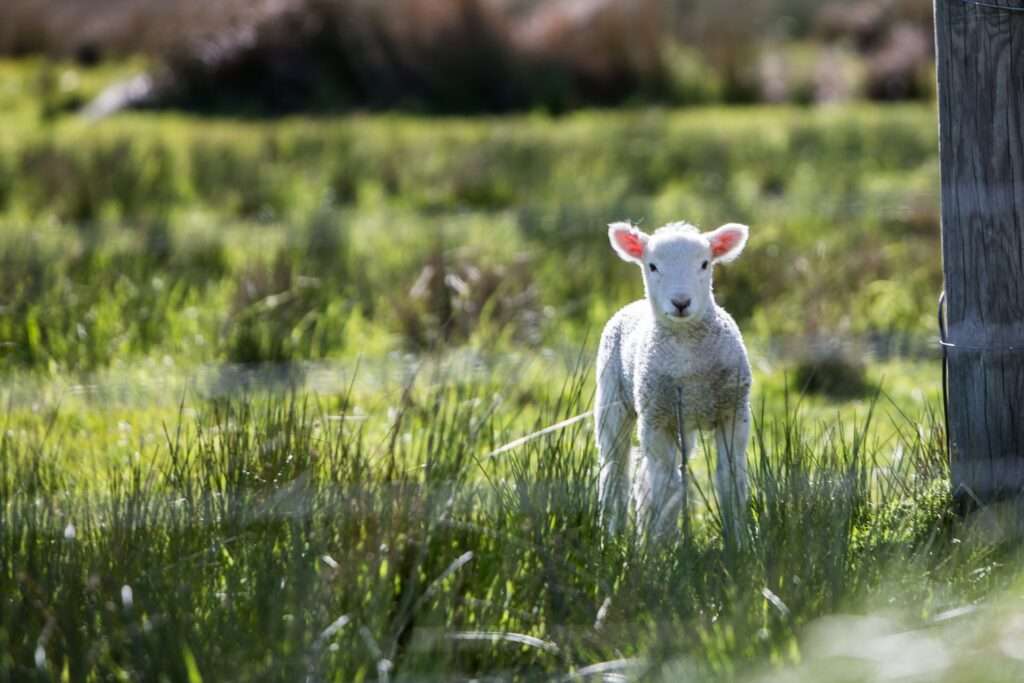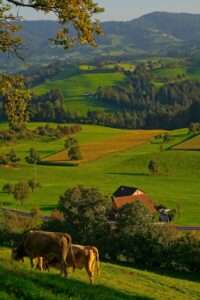By Lorna Robinson
Agroforestry isn’t a new phenomenon; Indigenous peoples have been practising it for thousands of years, but it’s now gaining popularity across the globe.
What is agroforestry?
Agroforestry is a land management approach in which trees are grown on the same area of land as crops or pasture. There are many types of agroforestry, but the two most common approaches are:
1. Silvopastoral agroforestry: the grazing of livestock beneath trees.
2. Silvoarable agroforestry: the growth of crops beneath trees.
Incorporating trees into cropland and pasture has many social, environmental and economic benefits beyond just increased biodiversity.
Benefits of Agroforestry Practises
Agroforestry mitigates climate change
Agroforestry can help landowners adapt to changing weather patterns as a result of climate change, by providing tree canopy cover. Trees protect crops from extreme weather by providing shade in hot temperatures, and protection from heavy frosts in colder months. This benefits farmers as their crops remain viable, and increases global food security with a forest farming system.
Carbon sequestration is the long term storage of carbon in plants, soils, landforms and the ocean. Agroforestry improves carbon sequestration, storing more atmospheric carbon in plants and soil than conventional farming practices. Carbon storage is critical for mitigating the effects of climate change, as it limits the amount of planet-warming carbon dioxide in the atmosphere.
Trees improve soil health
Soil leaching (when rainfall removes valuable nutrients from soil) is a problem for landowners and the environment. Increased rainfall induced by climate change threatens to increase the problem, but agroforestry can help in more ways that to just sequester carbon.
Treecanopy cover can intercept and slow the flow of rainfall before it hits the soil. This reduces the loss of nutrient rich top soil to erosion, keeping the soil more fertile and producing better crop yields. It also reduces the quantity and speed of nutrient-rich run-off that can enter and pollute nearby water systems.
Trees recycle nutrients
Instead of being lost in run-off, nutrients are recycled back into the crops when trees naturally drop their leaf litter. The decomposing leaves add organic matter to the soil, an invaluable service; leaf litter has been found to contribute up to 7kg of nitrogen per hectare per year. Because leaf litter naturally increases fertility in the top soil layer, farmers can save money by not needing to add fertilisers.
Agroforestry manages water
Planting trees alongside waterways can reduce soil erosion caused by wind and water. It can also help to stabilise riverbanks, resulting in less sediment erosion which improves water quality. Agroforestry also improves soil infiltration; more water is retained in the soil, reducing pollution and lessening the impact of flooding.
Biodiversity is boosted
Agroforestry has the potential to increase average biodiversity by more than two-fold. Research has found significantly higher diversity of plants, insects and pollinators in agro-forested areas compared to conventional croplands. Agroforestry farms create a diverse range of habitats; they act as ecological corridors, allowing for the movement of species between different habitats. Agroforestry research also suggests that by adding in trees on farms and improving windbreaks and shelterbelts, helps to improve annual crop resilience and permaculture.
This is important for reducing species loss and assisting in endangered species conservation.
The presence of trees alongside crops provides a habitat for pollinators and other insects that act as a natural pest control service. Natural pest controllers reduce the need for pesticides, saving farmers money and protecting the environment from contamination.
Trees increase the productivity of land
The intentional growth of hedges, trees and shrubs creates a more diverse agricultural operation, which can help to boost farmers profits. The trees grown provide a large range of products that can bring in extra income. For example; fruits or nuts, timber, biomass for heating, Christmas trees and recreation. This diversification can help create a more stable year round source of income, avoiding the peaks and troughs of seasonal demands.
Livestock welfare increases
Hedgerows and in-field trees can also boost livestock welfare as it provides shelter for the animals, and a wider range of food to forage. Trees act as a natural wind-break and shelter from storms. Research has shown that trees protect livestock from harsh weather so they can be left outside for longer, and can actually improve lamb survival rates!
The benefits aren’t just seen in low temperatures. As temperatures are increasing with climate change, trees will provide shade for livestock in the summer months.
For More Visit https://curious.earth/blog/agroforestry-the-future-of-farming/



